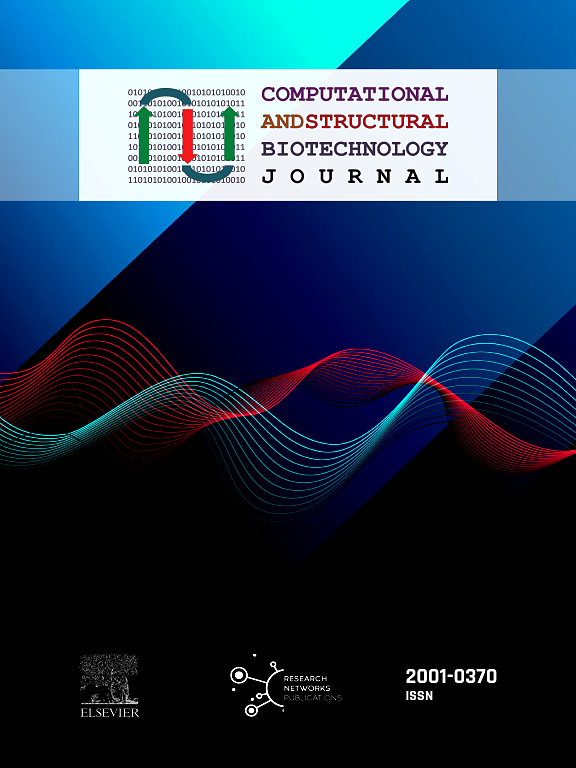生物相互作用和环境变化决定共生微生物的多样性和稳定性
IF 4.4
2区 生物学
Q2 BIOCHEMISTRY & MOLECULAR BIOLOGY
Computational and structural biotechnology journal
Pub Date : 2024-05-29
DOI:10.1016/j.csbj.2024.05.047
引用次数: 0
摘要
我们以两栖动物为岛屿模型,研究了种间相互作用对微生物生态多样性和稳定性的影响。随着皮肤面积的增加,皮肤微生物的多样性和稳定性下降,但负相互作用的强度显著增加。相比之下,随着肠道面积的增加,肠道微生物的多样性和稳定性增加,但相互作用的强度保持不变。这些结果表明,微生物的相互作用受到栖息地特性的影响。当生活在没有强过滤的波动环境中时,微生物可以通过改变周围环境的 pH 值来增强与其他类群的负面相互作用。相比之下,肠道的 pH 值相对稳定,定植的微生物无法改变肠道 pH 值,也就无法抑制其他定植者。这项研究表明,在微生物学领域,多样性和稳定性主要受种间相互作用强度的影响。本研究的发现加深了我们对微生物多样性和稳定性的理解,并提供了微生物生态系统中物种相互作用、生物多样性和稳定性之间的机理联系。本文章由计算机程序翻译,如有差异,请以英文原文为准。

Biotic interactions and environmental modifications determine symbiotic microbial diversity and stability
Taking amphibians as island models, we examined the effects of interspecific interaction on the diversity and stability of microbial ecological. As skin area increased, the diversity and stability of skin microbes decreased, but the strength of negative interactions increased significantly. In contrast, as gut area increased, the diversity and stability of gut microbes increased, but the strength of interactions remained constant. These results indicate that microbial interactions are affected by habitat properties. When living in fluctuating environments without strong filtering, microorganisms can enhance their negative interactions with other taxa by changing the pH of their surroundings. In contrast, the pH of the gut is relatively stable, and colonized microorganisms cannot alter the gut pH and inhibit other colonizers. This study demonstrates that in the field of microbiology, diversity and stability are predominantly influenced by the intensity of interspecies interactions. The findings in this study deepen our understanding of microbial diversity and stability and provide a mechanistic link between species interactions, biodiversity, and stability in microbial ecosystems.
求助全文
通过发布文献求助,成功后即可免费获取论文全文。
去求助
来源期刊

Computational and structural biotechnology journal
Biochemistry, Genetics and Molecular Biology-Biophysics
CiteScore
9.30
自引率
3.30%
发文量
540
审稿时长
6 weeks
期刊介绍:
Computational and Structural Biotechnology Journal (CSBJ) is an online gold open access journal publishing research articles and reviews after full peer review. All articles are published, without barriers to access, immediately upon acceptance. The journal places a strong emphasis on functional and mechanistic understanding of how molecular components in a biological process work together through the application of computational methods. Structural data may provide such insights, but they are not a pre-requisite for publication in the journal. Specific areas of interest include, but are not limited to:
Structure and function of proteins, nucleic acids and other macromolecules
Structure and function of multi-component complexes
Protein folding, processing and degradation
Enzymology
Computational and structural studies of plant systems
Microbial Informatics
Genomics
Proteomics
Metabolomics
Algorithms and Hypothesis in Bioinformatics
Mathematical and Theoretical Biology
Computational Chemistry and Drug Discovery
Microscopy and Molecular Imaging
Nanotechnology
Systems and Synthetic Biology
 求助内容:
求助内容: 应助结果提醒方式:
应助结果提醒方式:


